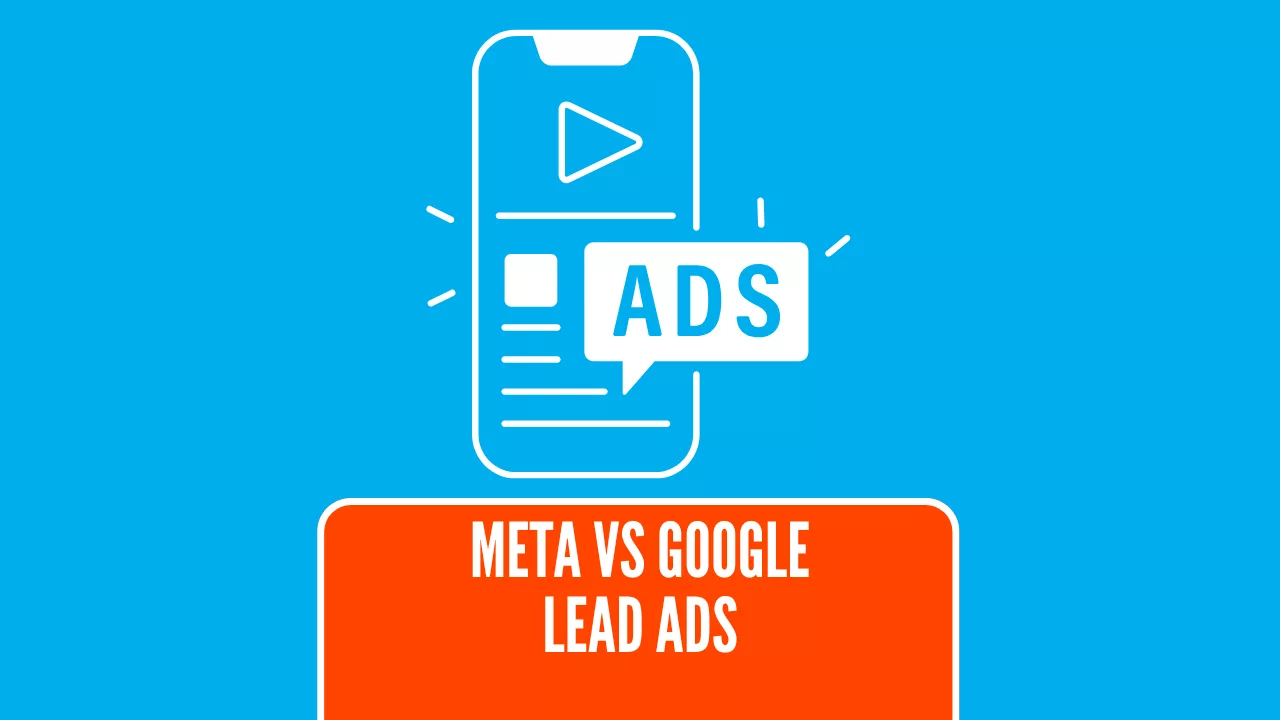Choosing between Meta Ads and Google Ads for lead generation can significantly impact your marketing success. When considering “Meta Ads vs Google Ads for lead generation: which should you use?”, it’s important to note that Meta Ads engage potential customers through visually compelling and interactive content on platforms like Facebook and Instagram. On the other hand, Google Ads capture high-intent leads through keyword targeting and user search intent. This guide will compare both, helping you decide which is best for your lead generation strategy.
Key Takeaways
Meta Ads focus on engaging visuals and advanced targeting options, making them ideal for brand awareness and community interaction, while Google Ads leverage keyword targeting to attract high-intent consumers actively searching for solutions.
Both advertising platforms have distinct advantages: Meta Ads generally offer a lower cost per lead and enhanced engagement through diverse ad formats, while Google Ads tend to yield higher conversion rates due to targeting users with immediate purchase intent.
Choosing between Meta Ads and Google Ads should align with business goals, audience analysis, and budget considerations, with a combined strategy potentially providing comprehensive coverage across different stages of the customer journey.
Overview of Lead Generation with Meta Ads and Google Ads
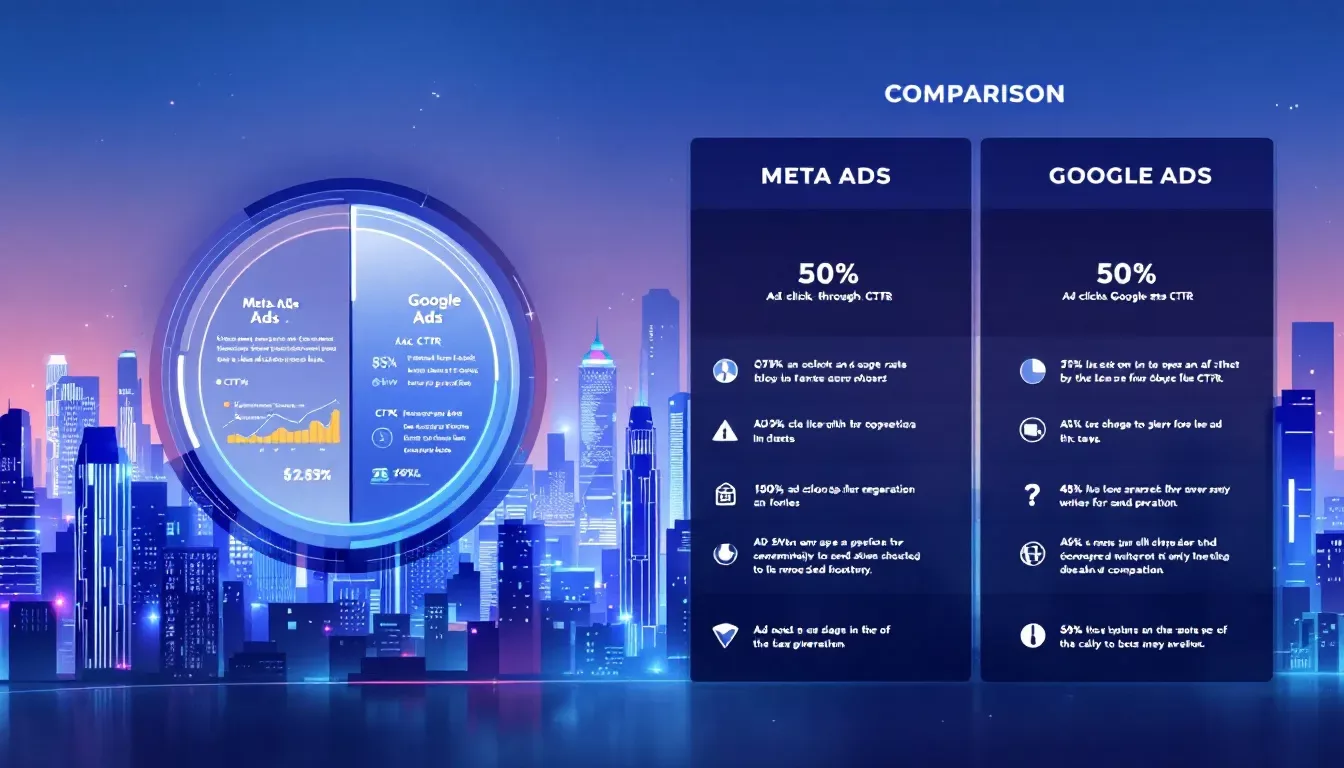
Meta Ads and Google Ads share similar foundations but diverge significantly in their lead generation strategies. While Meta Ads focus on engaging visuals and social interactions, Google Ads capitalize on keyword targeting and user search intent to capture leads. Understanding these differences is paramount for businesses aiming to optimize their lead generation efforts.
Meta Ads utilize a variety of creative formats, including videos and interactive content, to attract potential customers. These ads are typically linked to a Facebook Ads or Instagram profile, fostering user engagement through social metrics.
On the other hand, Google Ads prioritize delivering concise and relevant messages to users who are actively searching for specific solutions, making them suitable for targeting high-intent audiences.
Understanding Meta Ads for Lead Generation
Meta Ads excel in creating brand awareness and fostering customer interactions through advanced targeting options and diverse ad formats. Meta Ads can precisely reach potential leads through demographics, interests, and behaviors, enhancing campaign ROI and user engagement.
Examining the specifics of advanced targeting options and ad formats is crucial.
Advanced Targeting Options in Meta Ads
Meta Ads utilize a robust targeting system, focusing on user demographics, interests, and behaviors to create a highly personalized advertising experience. Unlike Google Ads, which rely on keyword targeting, Meta Ads analyze user data to tailor advertisements more effectively. This precision not only boosts ad effectiveness but also enhances engagement by targeting users with specific affinities for particular products or services.
Layered targeting is a powerful feature within Meta Ads, allowing advertisers to apply additional filters on demographics, interests, and behaviors for more precise audience searches. This system includes the creation of Lookalike audiences, enabling advertisers to target users similar to their existing customers, thereby expanding their reach. The higher specificity of targeting available in Meta Ads significantly improves the potency of advertising efforts.
Furthermore, Meta Ads can target users based on life events and buyer profiles, ensuring that the right message reaches the right audience at the right time. This advanced targeting capability makes Meta Ads a powerful tool for businesses looking to engage a more precisely defined audience group.
Ad Formats for Lead Generation
Meta Ads support a variety of ad formats, including image ads, video ads, and carousel ads, which enhance user engagement and drive lead generation. These formats leverage the power of visuals to capture attention, making them particularly effective for eCommerce businesses and brands looking to build awareness. For example, a successful Meta ad by Cadette showcased the jewelry creation process, significantly boosting user engagement.
The core components of Meta Ads include headlines, descriptions, primary text, and images/videos, all designed to enhance engagement. Testing multiple standalone ads allows Meta Ads to prioritize visuals to attract users, contrasting with Google Ads’ emphasis on responsive formats. This visual-centric approach can significantly increase site traffic, impressions, and average click-through rates (CTR).
Understanding Google Ads for Lead Generation
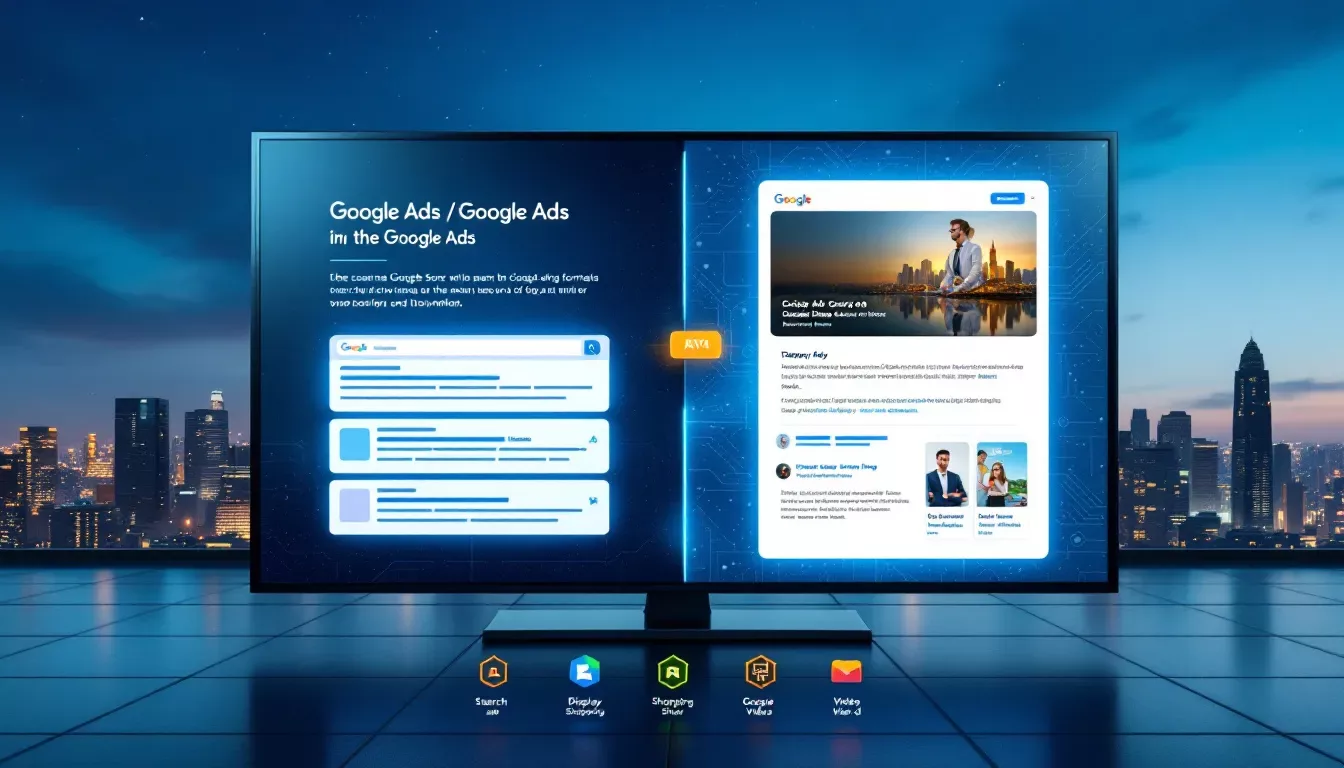
Google Ads are designed to reach users who are actively searching for specific solutions, making them particularly effective for targeting high-intent audiences. A google ad maximizes reach and drives qualified traffic by utilizing keyword targeting, paid ads, and multiple ad placements across search and display networks.
Understanding keyword targeting and the various ad formats Google Ads offer is essential.
Keyword Targeting in Google Ads
Google Ads allow businesses to target users who are actively searching for relevant products or services through specific keywords. Ads on the Google Search Network appear when users search for chosen keywords directly related to a business, ensuring that the advertisements are timely and relevant. This approach makes Google Ads, Google AdWords, and google search ad particularly effective for capturing high-intent leads who are ready to make a purchase.
Contextual targeting is another powerful feature of Google Ads, linking advertisements to relevant web pages based on selected keywords. This enhances the relevance of ads, ensuring they appear in contexts where users are most likely to engage with them. Additionally, monitoring competitor activity and keyword trends is crucial for effective keyword targeting, helping businesses stay ahead in the competitive landscape.
Effective keyword targeting in Google Ads requires selecting the right keywords, creating compelling ads, and defining specific targeting criteria. Aligning ads with search queries ensures that Google Ads remain relevant to users’ active searches, thereby increasing conversion likelihood.
Ad Formats in Google Ads
Google Ads support various ad formats, including text ads, rich media, and display ads, to engage potential customers. The primary ad formats offered by Google Ads include paid search ads, display ads, and shopping ads, each aligning with diverse marketing strategies. For instance, Google Shopping facilitates an easier setup for retailers and is integrated with Performance Max campaigns for broader product promotion.
The Google Display Network enhances reach by displaying ads on various partner sites, utilizing multiple powerful ad formats and targeting options. These diverse ad formats play a crucial role in effectively capturing leads by engaging potential customers across different platforms and touchpoints.
Comparing Lead Generation Effectiveness
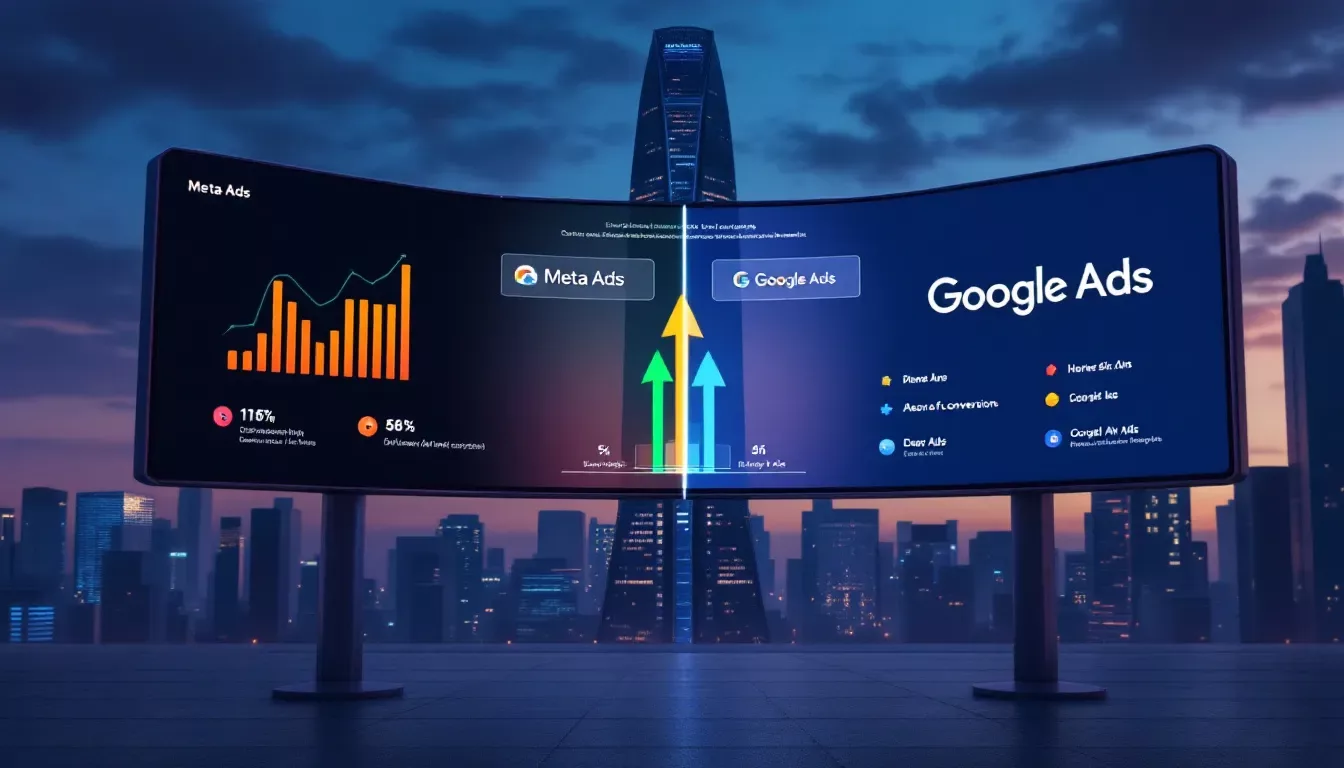
When it comes to lead generation effectiveness, both Meta Ads and Google Ads offer unique advantages. Google Ads prioritize immediate actions by delivering concise and relevant messages to users, significantly boosting sales and generating leads by prompting specific customer actions. This makes Google Ads particularly suitable for businesses focused on acquiring new customers with practical products.
On the other hand, Meta Ads streamline the lead collection process by allowing users to fill out forms directly within the platform, reducing drop-off rates. While Google Ads are favored for immediate returns, Meta Ads offer expansive reach and sophisticated targeting options, enhancing brand presence and meaningful engagement.
The choice between the two often depends on the specific goals and strategies of the business.
Cost Per Lead (CPL) Analysis
Google Ads generally operate on a cost-per-click model, providing measurable metrics for ROIs from clicks. However, this model can lead to significant expenses if not managed well, especially with high competition for keywords. The average cost per lead from Google Ads is typically higher due to competition and bidding strategies.
In contrast, Meta Ads tend to have a lower cost per lead, suggesting better value for money. This lower CPL is attributed to the advanced targeting options and the ability to engage users based on their interests and behaviors.
Businesses looking for cost-effective lead generation may find Meta Ads more favorable compared to Google Ads.
Conversion Rates
Google Ads often yield higher conversion rates because they target users actively searching for specific products or services. The platform provides in-depth performance insights, facilitating detailed optimization of campaigns over time. This scalability allows advertisers to adjust budgets and targeting based on campaign performance, enhancing overall conversion rates.
Meta Ads can achieve good conversion rates when optimized for engagement-focused campaigns. However, the ease of completing forms through Meta Ads may sometimes lead to a decrease in the quality of leads, as users may not be fully engaged.
Despite this, the rich media formats and engaging visuals in Meta Ads can significantly enhance user interaction and conversion potential.
Advantages and Disadvantages of Meta Ads for Lead Generation
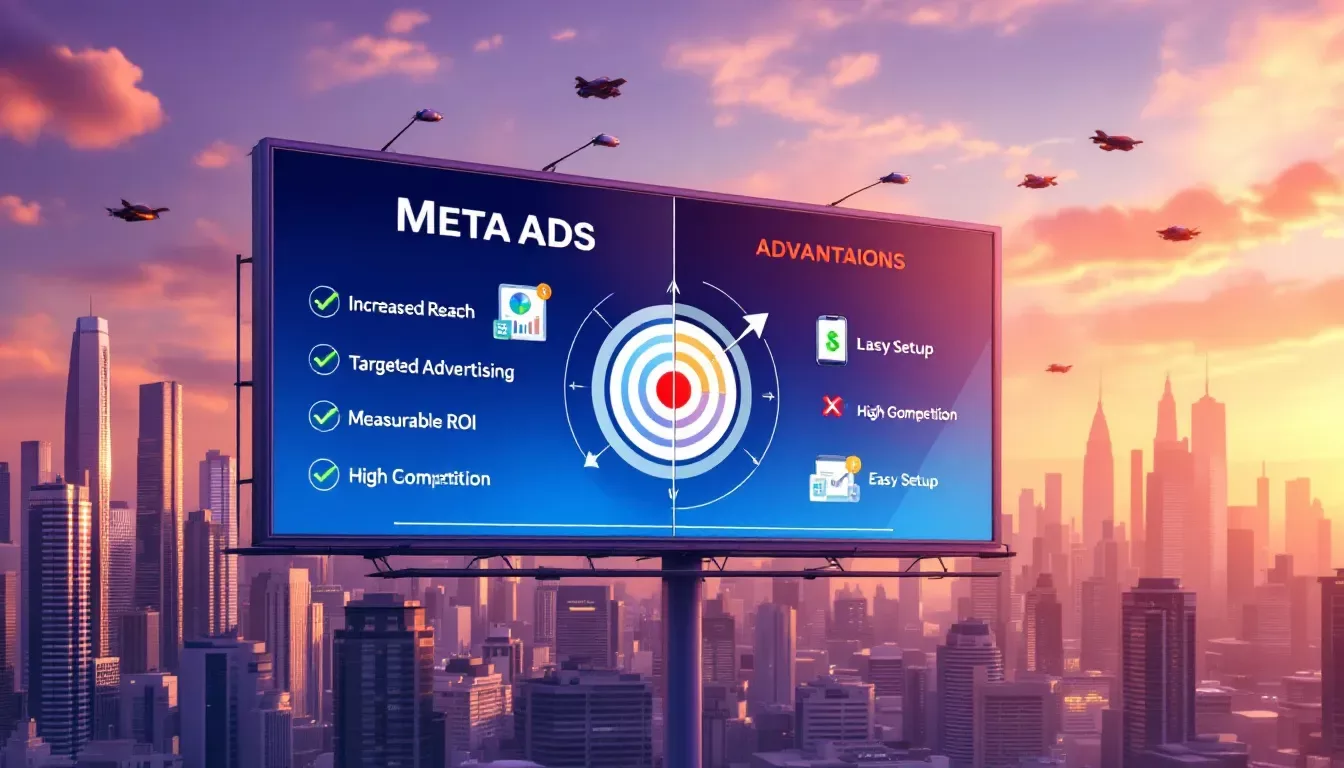
Meta Ads offer distinct advantages and disadvantages for lead generation. While they excel in creating brand awareness and fostering community-driven interactions, they may face challenges in immediate lead conversion and sales.
Let’s delve deeper into the specific advantages and disadvantages of Meta Ads.
Advantages of Meta Ads
Meta Ads are designed to engage users based on their interests and behaviors, making them ideal for generating brand awareness. The platform is aimed at expanding brand recognition and audience reach, often at lower cost-per-click rates, making it suitable for cost-effective brand exposure. This is particularly beneficial for businesses looking to boost brand awareness and improve audience interaction.
Custom audiences in Meta Ads allow advertisers to re-engage with users who have previously interacted with their business, enhancing the potential for conversions. Additionally, Lookalike audiences help advertisers reach new users who share characteristics with their existing customers, expanding their reach and engagement.
Meta Ads effectively leverage mobile compatibility, making them user-friendly on smartphones. Features like automatic form completion simplify the data entry process for users, further enhancing engagement and lead generation potential.
Disadvantages of Meta Ads
Despite their advantages, Meta Ads come with several limitations and challenges for lead generation. Ad visibility can be a significant issue, especially due to longer setup and optimization periods and potential algorithm adjustments affecting how ads are shown. These factors can impact the overall effectiveness and efficiency of Meta Ads campaigns.
Lead quality can also be an issue, as Meta Ads may sometimes attract spam leads due to broad targeting parameters. This can result in a higher volume of low-quality leads, which may not convert as effectively, posing a challenge for businesses focused on immediate sales.
Advantages and Disadvantages of Google Ads for Lead Generation
Google Ads offer a different set of advantages and disadvantages for lead generation. While they effectively target high purchase intent audiences and offer diverse ad formats, they can incur higher costs and require complex management.
Let’s explore these advantages and disadvantages in more detail.
Advantages of Google Ads
Google Ads attract a high purchase intent audience, making the platform highly effective for businesses seeking immediate sales. The platform processes over 40,000 search queries each second, connecting brands with a vast audience and enhancing lead generation potential. This extensive reach is a significant advantage for businesses looking to capture high-intent leads quickly.
The diversity of ad formats in Google Ads, including search ads, display ads, and shopping ads, allows businesses to choose the format that best fits their strategy and target audience. This flexibility, coupled with the ability to test various budgets and make immediate adjustments, enhances the lead generation capabilities of Google Ads.
Google Ads also provide detailed performance insights, facilitating continuous optimization of ad campaigns and the overall effectiveness of a Google Ads campaign and Google Ads campaigns. This scalability and ability to adjust budgets and targeting based on campaign performance help businesses maximize their lead generation efforts.
Disadvantages of Google Ads
Despite its many advantages, Google Ads often incur considerable expenses that can impact overall marketing budgets. The pay-per-click model can lead to significant costs, especially when dealing with high competition for keywords. Non-converting clicks can also accumulate, adding to the expense without producing effective lead generation.
Additionally, the complexity of the Google Ads platform, particularly the Ad Rank system, complicates campaign management. This complexity requires a significant time investment for refinement and strategy implementation, making it challenging for businesses without dedicated resources.
Choosing the Right Platform for Your Business
Selecting the right platform for your business hinges on several factors, including specific business objectives, targeting options, and budget constraints. While Google Ads typically attract audiences with immediate purchase intent, Meta Ads are more effective for broader engagement and brand presence.
Aligning your advertising strategy with your business goals, understanding your target audience, and carefully considering your budget are crucial steps in this decision-making process.
Aligning with Business Goals
Meta Ads focus on creating brand recognition and fostering customer interaction, making them ideal for companies aiming to amplify online visibility and connect with a broader audience. The advantages of using Meta Ads include boosting brand awareness, improving audience interaction, and offering adjustable budgeting solutions. For businesses looking to expand their reach and engage with potential customers over the long term, Meta Ads can be a powerful tool.
Conversely, Google Ads are geared towards making more sales quickly, aligning with immediate revenue generation goals. The ad platforms’ ability to attract high purchase intent audiences and generate instant sales makes it a preferred choice for businesses focused on immediate returns.
By understanding the strengths of both Meta Ads and Google Ads, businesses can effectively align their advertising efforts with their specific objectives.
Audience Analysis
Meta Ads offer advanced targeting options, enabling advertisers to reach users by demographics, interests, and behaviors. This extensive demographic and interest-based targeting allows businesses to engage with users who are likely to be interested in their products or services. Detailed targeting options allow businesses to tailor messages to resonate with specific audience segments.
Google Ads, on the other hand, primarily targets users through keyword targeting, focusing on search intent to connect with users actively looking for specific products or services. This makes Google Ads particularly effective for targeting high purchase intent audiences based on their search behavior and google advertising strategies.
Understanding these differences is crucial for businesses to choose the platform that best aligns with their audience targeting needs.
Budget Considerations
Meta Ads allow for more flexible budget management at the ad set level, catering to different audience segments within a single campaign. This flexibility is beneficial for businesses that need to allocate budgets dynamically based on performance and audience engagement. Tracking ROI is critical for assessing the effectiveness of PPC campaigns and ensuring that the ad spend is justified.
In Google Ads, budgeting is managed at the campaign level, allowing comprehensive control over spending. However, Google Ads can exceed the daily budget by up to 100% on any given day, which requires meticulous oversight to avoid unexpected budget overruns. Regularly reviewing and adjusting budget allocations can lead to improved lead generation results over time.
Combining Meta Ads and Google Ads for Optimal Results
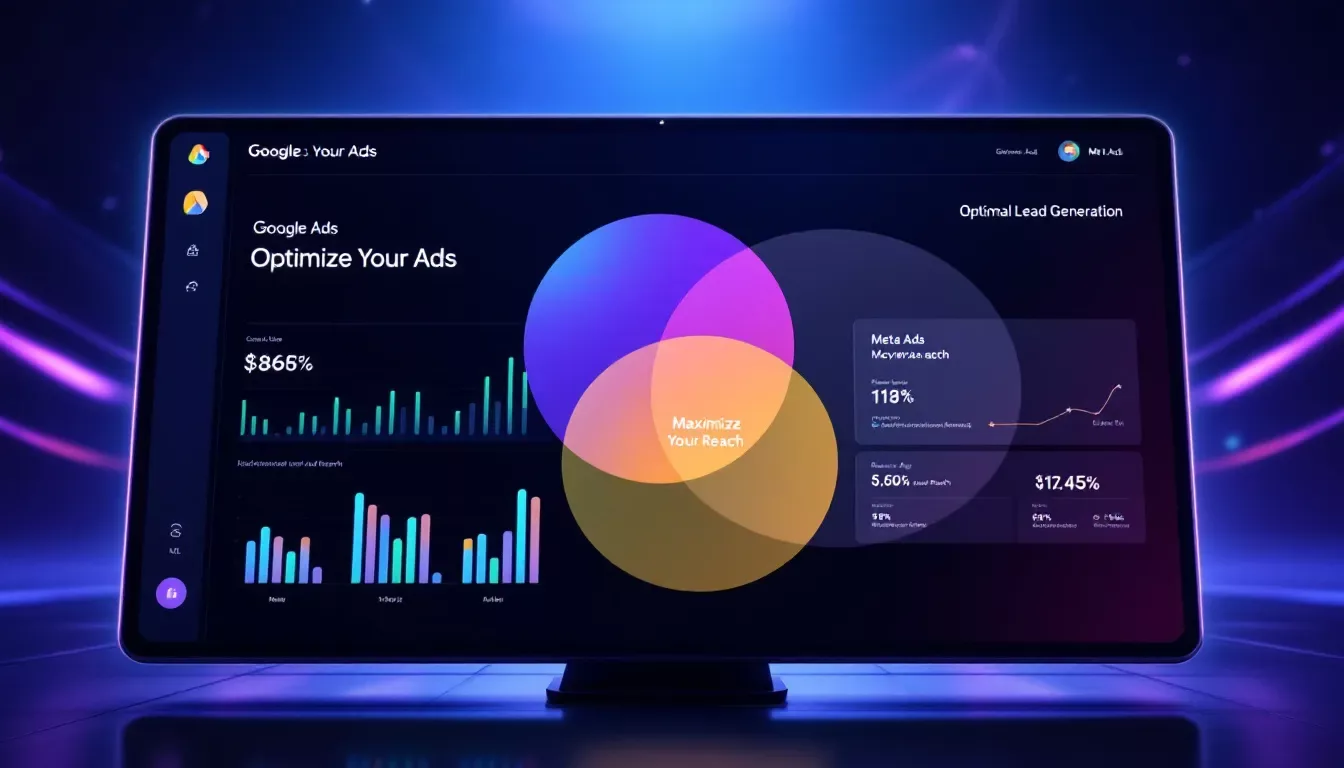
Combining Google Ads and Meta Ads can significantly enhance brand visibility and customer engagement. Utilizing the strengths of both platforms allows businesses to create a comprehensive advertising strategy covering different stages of the customer journey.
Let’s explore synergistic strategies for integrating these platforms and tips for effective budget allocation.
Synergistic Strategies
Effective integration of Google Ads and Meta Ads enhances marketing efforts across different stages of the customer journey. Maintaining cohesive branding and optimizing for engagement helps businesses create a unified marketing approach that resonates with target audiences. For instance, marketers can use the ‘Engagement’ objective in Meta Ads to create event ads and leverage automation tools to expand audience reach.
Combining these strategies with keyword-targeted campaigns across both the Google Search Network and Google Display Network can maximize lead generation potential. Selecting specific websites for ad placements within the Google Display Network further enhances reach and engagement.
Budget Allocation Tips
Effective budget allocation is crucial for maximizing lead generation performance across Meta Ads and Google Ads. Budget distribution should reflect each platform’s performance and intended role within the marketing funnel. Understanding the unique strengths of Meta Ads and Google Ads can help in determining their respective budget shares.
Regularly reviewing and adjusting budget allocations can lead to improved lead generation results over time. Monitoring performance metrics and ROI ensures that ad spend is effectively utilized, optimizing the overall advertising strategy.
Summary
In summary, both Meta Ads and Google Ads offer unique advantages and challenges for lead generation. Meta Ads excel in creating brand awareness and fostering customer interactions through advanced targeting options and engaging ad formats. They provide cost-effective solutions for businesses looking to expand their reach and engage with potential customers.
Google Ads, on the other hand, are designed to target high-intent audiences actively searching for specific products or services. They offer diverse ad formats and detailed performance insights, making them effective for immediate sales and high-quality lead generation. By understanding the strengths and weaknesses of each platform, businesses can make informed decisions on which platform to use based on their specific goals and objectives.
Ultimately, combining Meta Ads and Google Ads can provide a comprehensive advertising strategy that enhances brand visibility and maximizes lead generation potential. By leveraging the unique strengths of both platforms, businesses can create a more effective and cohesive marketing approach that drives results.
Frequently Asked Questions
What are the main differences between Meta Ads and Google Ads for lead generation?
The main difference between Meta Ads and Google Ads for lead generation lies in their targeting approach: Meta Ads emphasize brand awareness and engagement through advanced targeting and engaging formats, whereas Google Ads focus on capturing high-intent audiences through keyword targeting and a variety of ad formats.
Which platform offers a lower cost per lead?
Meta Ads typically provide a lower cost per lead than Google Ads, making them a more cost-effective option for businesses seeking value.
How do Meta Ads and Google Ads differ in their targeting options?
Meta Ads primarily target users based on demographics, interests, and behaviors, whereas Google Ads focus on keyword targeting that reflects user search intent. This distinction allows advertisers to choose the platform that best aligns with their campaign objectives.
What are the advantages of combining Meta Ads and Google Ads?
Combining Meta Ads and Google Ads enhances brand visibility and customer engagement by utilizing each platform’s strengths across various stages of the customer journey. This integrated approach maximizes lead generation potential and overall marketing effectiveness.
How should businesses allocate their budget between Meta Ads and Google Ads?
To effectively allocate your budget between Meta Ads and Google Ads, focus on the performance of each platform in your marketing funnel and adjust allocations regularly to enhance lead generation outcomes. This strategic approach ensures you optimize your advertising investment.

